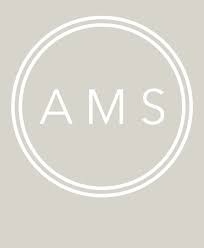Central Auckland, East Auckland, North Auckland, South Auckland, West Auckland > Private Hospitals & Specialists >
Auckland Medical Specialists (AMS) – Paediatric Services
Private Service, Paediatrics
Today
8:00 AM to 12:30 PM.
Description
Paediatrics at Auckland Medical Specialists is a comprehensive, general and subspecialty paediatric service for your child. We pride ourselves in high standards of specialty paediatric medical care with all of our specialists having public appointments at Starship Hospital.
We have close links with paediatric surgical services as well as allied health professionals in the Auckland community enabling multidisciplinary care of even the most complex issues.
Consultants
-

Dr Sat Bhatia
Paediatrician
-

Dr Philippa Carter
Paediatrician
-

Dr Fran Mouat
Paediatrician
-

Dr Rakesh Patel
Paediatrician
-

Dr Amin Roberts
Paediatrician
-

Dr Danny Stewart
Paediatrician
Ages
Child / Tamariki
How do I access this service?
Referral
All patients must have a referral letter. Email preferred.
We will let you know once we have received your child's referral and will contact you when we have appointments available.
Fees and Charges Categorisation
Fees apply
Fees and Charges Description
Each doctor has different fees.
Doctors Roberts, Patel and Mouat are Southern Cross Affiliated Providers. If you're insured with Southern Cross or NIB and have pre-approval, we're able to bill your insurance provider directly.
Hours
8:00 AM to 12:30 PM.
| Mon – Fri | 8:00 AM – 5:00 PM |
|---|---|
| Sat | 8:00 AM – 12:30 PM |
Languages Spoken
English
Procedures / Treatments
What is a heart murmur? When the valves close in the heart, they make a noise. “Murmur” is a medical word to describe extra noises coming from the heart. Normally these noises are of no significance, and occur in the normal heart, but your GP has referred you to a paediatrician (children’s doctor) or paediatric cardiologist (children’s heart doctor) to make sure that the murmur is not being caused by a problem with the heart. The most common heart problems causing a murmur are minor, and many require no treatment. When will my child be seen? A child with a heart murmur who is otherwise healthy will usually be seen within three months. Your GP may request an earlier referral. Symptoms suggestive of a heart problem requiring earlier referral include: pale or blue episodes (especially blue lips or tongue); shortness of breath; and, in infants, poor weight gain and breathlessness or sweating during feeds. You should see your child’s GP if any of these symptoms develop, even if a referral for a murmur has already been made. What will happen at the appointment? Your child will be seen at an outpatient clinic in hospital. Sometimes tests are done at the clinic before seeing the doctor. These may include: ECG (electrocardiogram): stickers are placed on your child’s ankles and wrists and on the chest. Leads are then attached to these to record the electrical activity of the heart. The child must lie still for one minute whilst this test is done. chest x-ray blood pressure measurement pulse oximetry: a small probe is placed over the end of the finger to measure the amount of oxygen in the blood echocardiography: an ultrasound probe is held over the heart to give a picture of the heart much like the ultrasound scan used during pregnancy to give a picture of the unborn baby. Your child needs to lie still for 15-20 minutes during this test. If your child is too unsettled, a later appointment may be made for the test to be done under sedation (medication is given to make your child feel sleepy). Because of delays whilst waiting to have these tests done there may be a delay of an hour or two before you see the doctor
What is a heart murmur? When the valves close in the heart, they make a noise. “Murmur” is a medical word to describe extra noises coming from the heart. Normally these noises are of no significance, and occur in the normal heart, but your GP has referred you to a paediatrician (children’s doctor) or paediatric cardiologist (children’s heart doctor) to make sure that the murmur is not being caused by a problem with the heart. The most common heart problems causing a murmur are minor, and many require no treatment. When will my child be seen? A child with a heart murmur who is otherwise healthy will usually be seen within three months. Your GP may request an earlier referral. Symptoms suggestive of a heart problem requiring earlier referral include: pale or blue episodes (especially blue lips or tongue); shortness of breath; and, in infants, poor weight gain and breathlessness or sweating during feeds. You should see your child’s GP if any of these symptoms develop, even if a referral for a murmur has already been made. What will happen at the appointment? Your child will be seen at an outpatient clinic in hospital. Sometimes tests are done at the clinic before seeing the doctor. These may include: ECG (electrocardiogram): stickers are placed on your child’s ankles and wrists and on the chest. Leads are then attached to these to record the electrical activity of the heart. The child must lie still for one minute whilst this test is done. chest x-ray blood pressure measurement pulse oximetry: a small probe is placed over the end of the finger to measure the amount of oxygen in the blood echocardiography: an ultrasound probe is held over the heart to give a picture of the heart much like the ultrasound scan used during pregnancy to give a picture of the unborn baby. Your child needs to lie still for 15-20 minutes during this test. If your child is too unsettled, a later appointment may be made for the test to be done under sedation (medication is given to make your child feel sleepy). Because of delays whilst waiting to have these tests done there may be a delay of an hour or two before you see the doctor
- ECG (electrocardiogram): stickers are placed on your child’s ankles and wrists and on the chest. Leads are then attached to these to record the electrical activity of the heart. The child must lie still for one minute whilst this test is done.
- chest x-ray
- blood pressure measurement
- pulse oximetry: a small probe is placed over the end of the finger to measure the amount of oxygen in the blood
- echocardiography: an ultrasound probe is held over the heart to give a picture of the heart much like the ultrasound scan used during pregnancy to give a picture of the unborn baby. Your child needs to lie still for 15-20 minutes during this test. If your child is too unsettled, a later appointment may be made for the test to be done under sedation (medication is given to make your child feel sleepy).
Undescended testes occur in less than 4% of children, and are more common in premature babies. Many “undescended” testes are simply lying very high in the groin and can be brought down by hand, and some true undescended testes will come down by themselves in the first year of life. After one year, undescended testes always remain so. It is important for your GP to refer your child to a paediatric surgeon (children’s surgeon) if the testes are not felt in the scrotum. If not treated there may be problems in adult life with infertility or an increased risk of cancer of the undescended testis. A surgeon will see your child in a hospital outpatient clinic. When will my child be seen? Most children will be seen within six weeks of the referral. What will happen at the appointment? The surgeon will examine your child carefully to see if the testis can be felt in the body. If the testis can be felt, a simple operation under general anaesthetic (putting your child to sleep during the operation) would be performed between 9 and 12 months of age. If the testes cannot be felt, a different type of operation would be performed so that the surgeon can check where the testes are. In some cases, the testes are absent. Both types of surgery involve an overnight stay in hospital.
Undescended testes occur in less than 4% of children, and are more common in premature babies. Many “undescended” testes are simply lying very high in the groin and can be brought down by hand, and some true undescended testes will come down by themselves in the first year of life. After one year, undescended testes always remain so. It is important for your GP to refer your child to a paediatric surgeon (children’s surgeon) if the testes are not felt in the scrotum. If not treated there may be problems in adult life with infertility or an increased risk of cancer of the undescended testis. A surgeon will see your child in a hospital outpatient clinic. When will my child be seen? Most children will be seen within six weeks of the referral. What will happen at the appointment? The surgeon will examine your child carefully to see if the testis can be felt in the body. If the testis can be felt, a simple operation under general anaesthetic (putting your child to sleep during the operation) would be performed between 9 and 12 months of age. If the testes cannot be felt, a different type of operation would be performed so that the surgeon can check where the testes are. In some cases, the testes are absent. Both types of surgery involve an overnight stay in hospital.
What is an inguinal hernia? An inguinal hernia is caused by a connection between the scrotum and the abdomen (uncommonly a similar connection occurs in girls causing an inguinal hernia). The connection is present in all babies in the womb during development, but in most babies has closed over before birth. The connection allows some contents of the abdomen to pass down towards the scrotum causing a bulge in the groin. The bulge is often more noticeable when the baby cries. The bulge (or hernia) can usually be pushed back into the abdomen by gentle pressure when the baby is settled. Uncommonly the hernia cannot be pushed back (“reduced”), which can be a serious complication because the tissue trapped in the connection can become swollen and damaged. An inguinal hernia can be repaired with a simple operation. Your family doctor will have referred you to a children’s surgeon who is experienced in repairing inguinal hernias. You will be seen in a hospital out-patient clinic. When will my child be seen? The younger your child is, the sooner he will be seen by the surgeon. A baby less than a few months old will usually be seen within a week and an operation might be booked within a few days. A six month old baby may wait several weeks for a clinic appointment and the operation may be booked some weeks later. Incarcerated hernias (those which cannot be pushed back) are operated on straight away. How can I tell if the hernia is incarcerated (cannot be pushed back)? If your baby cannot be settled, and has a swelling in the groin which you cannot push back, he should be taken to a doctor as soon as possible. The doctor must be seen urgently if the hernia is swollen, red and tender. He should not be fed until he has been examined by the doctor in case he needs later surgery.
What is an inguinal hernia? An inguinal hernia is caused by a connection between the scrotum and the abdomen (uncommonly a similar connection occurs in girls causing an inguinal hernia). The connection is present in all babies in the womb during development, but in most babies has closed over before birth. The connection allows some contents of the abdomen to pass down towards the scrotum causing a bulge in the groin. The bulge is often more noticeable when the baby cries. The bulge (or hernia) can usually be pushed back into the abdomen by gentle pressure when the baby is settled. Uncommonly the hernia cannot be pushed back (“reduced”), which can be a serious complication because the tissue trapped in the connection can become swollen and damaged. An inguinal hernia can be repaired with a simple operation. Your family doctor will have referred you to a children’s surgeon who is experienced in repairing inguinal hernias. You will be seen in a hospital out-patient clinic. When will my child be seen? The younger your child is, the sooner he will be seen by the surgeon. A baby less than a few months old will usually be seen within a week and an operation might be booked within a few days. A six month old baby may wait several weeks for a clinic appointment and the operation may be booked some weeks later. Incarcerated hernias (those which cannot be pushed back) are operated on straight away. How can I tell if the hernia is incarcerated (cannot be pushed back)? If your baby cannot be settled, and has a swelling in the groin which you cannot push back, he should be taken to a doctor as soon as possible. The doctor must be seen urgently if the hernia is swollen, red and tender. He should not be fed until he has been examined by the doctor in case he needs later surgery.
What is a urine infection? A urine infection is the presence of bacteria in the urinary tract (bladder and kidneys). Urine should be sterile (free of bacteria). Why did my child get a urine infection? Approximately 1% of boys and 3% of girls get a urine infection in the first ten years of life. Bacteria can enter the urinary tract from the skin around the urethra (where the urine normally comes out), or occasionally from infection within the body. Constipation can contribute to a urine infection and children who hold on to their wees for long periods are also at risk of developing a urine infection. Some children will have a blockage in the urinary tract, or a back flow of urine from the bladder towards the kidneys (called vesico-ureteric reflux VUR) which has cause the infection. How is the urine infection treated? A course of antibiotics will treat a urine infection. If your child is vomiting or too unwell to take antibiotics by mouth, hospitalisation for intravenous (in the vein) antibiotics may be needed. Antibiotics should improve symptoms within 48 hours. If they have not, see your GP. Why does my child need to have tests done? All babies and very young children should have tests done to check their urinary tract. In up to 40% of young children with a urine infection, there is a back flow of urine towards the kidneys, and in a very small percentage there is a blockage in the urinary tract. These conditions stop the urine flowing normally and make children more likely to have repeated urine infections. Blockages and severe VUR may need to be repaired with surgery, and VUR may need long term treatment with antibiotics to help prevent kidney scarring and possible kidney failure. It is important therefore to take antibiotics until the tests are done, in case VUR is diagnosed. What tests will be done? The tests your GP has referred you for may include: kidney ultrasound: this is similar to the ultrasound to check the baby in the womb during pregnancy. It shows the size and shape of the kidneys and is usually done about one month after referral micturating cystourethrogram (MCUG): this test uses x-rays to see dye moving out of the bladder. It will detect back flow of urine (VUR) and blockages in the urinary tract. The dye is put into the bladder through the urethra using a thin tube called a catheter. Your child is then held still for several minutes while x-rays are taken. Inserting the catheter can be uncomfortable, and hands-on support by the accompanying adult may be needed. Arranging child care for any other children in your care is advisable for this test. In children older than about 18 months, sedation may be offered to make your child sleepy and less aware of the test. The MCUG is done approximately one month after the referral. What if the tests show an abnormality? You should see your GP after these tests have been done. Your GP may refer your child to a children’s doctor (paediatrician) at a hospital clinic. Antibiotics should be continued unless you are told otherwise. Will my child get further urine infections? Repeated urine infections can occur even when antibiotics are being taken. It is important to have your child’s urine checked if the following symptoms develop: fever; strong smelling or discoloured urine; pain on passing urine; your child is “not well” or has unsettled behaviour. To prevent further infections, avoid constipation, avoid bubble baths (or other irritating soaps), take antibiotics when prescribed, change soiled nappies quickly, and wipe the bottom from the front to the back.
What is a urine infection? A urine infection is the presence of bacteria in the urinary tract (bladder and kidneys). Urine should be sterile (free of bacteria). Why did my child get a urine infection? Approximately 1% of boys and 3% of girls get a urine infection in the first ten years of life. Bacteria can enter the urinary tract from the skin around the urethra (where the urine normally comes out), or occasionally from infection within the body. Constipation can contribute to a urine infection and children who hold on to their wees for long periods are also at risk of developing a urine infection. Some children will have a blockage in the urinary tract, or a back flow of urine from the bladder towards the kidneys (called vesico-ureteric reflux VUR) which has cause the infection. How is the urine infection treated? A course of antibiotics will treat a urine infection. If your child is vomiting or too unwell to take antibiotics by mouth, hospitalisation for intravenous (in the vein) antibiotics may be needed. Antibiotics should improve symptoms within 48 hours. If they have not, see your GP. Why does my child need to have tests done? All babies and very young children should have tests done to check their urinary tract. In up to 40% of young children with a urine infection, there is a back flow of urine towards the kidneys, and in a very small percentage there is a blockage in the urinary tract. These conditions stop the urine flowing normally and make children more likely to have repeated urine infections. Blockages and severe VUR may need to be repaired with surgery, and VUR may need long term treatment with antibiotics to help prevent kidney scarring and possible kidney failure. It is important therefore to take antibiotics until the tests are done, in case VUR is diagnosed. What tests will be done? The tests your GP has referred you for may include: kidney ultrasound: this is similar to the ultrasound to check the baby in the womb during pregnancy. It shows the size and shape of the kidneys and is usually done about one month after referral micturating cystourethrogram (MCUG): this test uses x-rays to see dye moving out of the bladder. It will detect back flow of urine (VUR) and blockages in the urinary tract. The dye is put into the bladder through the urethra using a thin tube called a catheter. Your child is then held still for several minutes while x-rays are taken. Inserting the catheter can be uncomfortable, and hands-on support by the accompanying adult may be needed. Arranging child care for any other children in your care is advisable for this test. In children older than about 18 months, sedation may be offered to make your child sleepy and less aware of the test. The MCUG is done approximately one month after the referral. What if the tests show an abnormality? You should see your GP after these tests have been done. Your GP may refer your child to a children’s doctor (paediatrician) at a hospital clinic. Antibiotics should be continued unless you are told otherwise. Will my child get further urine infections? Repeated urine infections can occur even when antibiotics are being taken. It is important to have your child’s urine checked if the following symptoms develop: fever; strong smelling or discoloured urine; pain on passing urine; your child is “not well” or has unsettled behaviour. To prevent further infections, avoid constipation, avoid bubble baths (or other irritating soaps), take antibiotics when prescribed, change soiled nappies quickly, and wipe the bottom from the front to the back.
- kidney ultrasound: this is similar to the ultrasound to check the baby in the womb during pregnancy. It shows the size and shape of the kidneys and is usually done about one month after referral
- micturating cystourethrogram (MCUG): this test uses x-rays to see dye moving out of the bladder. It will detect back flow of urine (VUR) and blockages in the urinary tract. The dye is put into the bladder through the urethra using a thin tube called a catheter. Your child is then held still for several minutes while x-rays are taken. Inserting the catheter can be uncomfortable, and hands-on support by the accompanying adult may be needed. Arranging child care for any other children in your care is advisable for this test. In children older than about 18 months, sedation may be offered to make your child sleepy and less aware of the test. The MCUG is done approximately one month after the referral.
Disability Assistance
Mobility parking space, Wheelchair access, Wheelchair accessible toilet
Travel Directions
Travelling from South
- Take the Market Rd exit and turn left
- Right turn at lights into Great South Rd
- Travel to main intersection of Manukau Rd & Great South Rd lights
- Straight ahead into Alpers Ave (one way street)
- Left turn into Gillies Ave
- Drive approximately 750m along Gillies Ave
- You will see us on the right-hand side of the road, almost opposite Southern Cross Gillies Ave Hospital
Travelling from North
- Take the Gillies Ave exit
- Turn right at the traffic lights, on to Gillies Ave
- Drive approximately 1km along Gillies Ave
- You will see us on the right-hand side of the road, almost opposite Southern Cross Gillies Ave Hospital
Public Transport
We recommend the Auckland Transport website.
This website will provide you with information on the public transport available in your area as well as prices, timetables and a journey planner
Parking
There is parking available on site (including disabled).
Parking is also available on Gillies Ave between 9am-4pm.
Pharmacy
Find your nearest pharmacy here
Contact Details
Auckland Medical Specialists, 183 Gillies Avenue, Epsom, Auckland
Central Auckland
8:00 AM to 12:30 PM.
-
Phone
(09) 638 9945
-
Fax
(09) 638 9947
Healthlink EDI
akmdspec
Email
Website
183 Gillies Avenue
Epsom
Auckland 1023
Street Address
183 Gillies Avenue
Epsom
Auckland 1023
Postal Address
PO Box 99354
Newmarket 1149
Auckland
Was this page helpful?
This page was last updated at 3:16PM on June 13, 2024. This information is reviewed and edited by Auckland Medical Specialists (AMS) – Paediatric Services.

